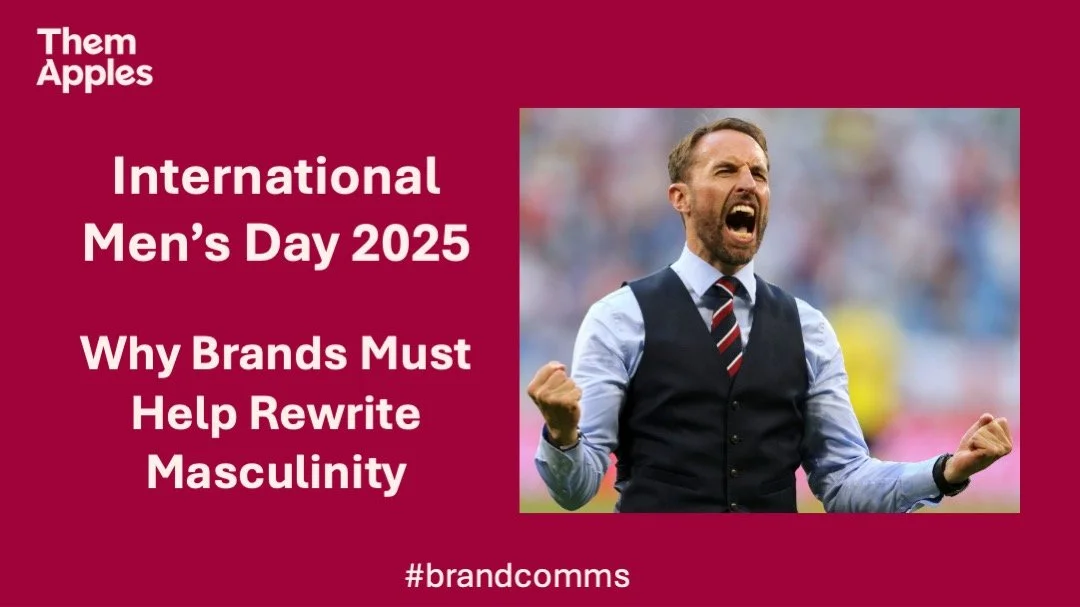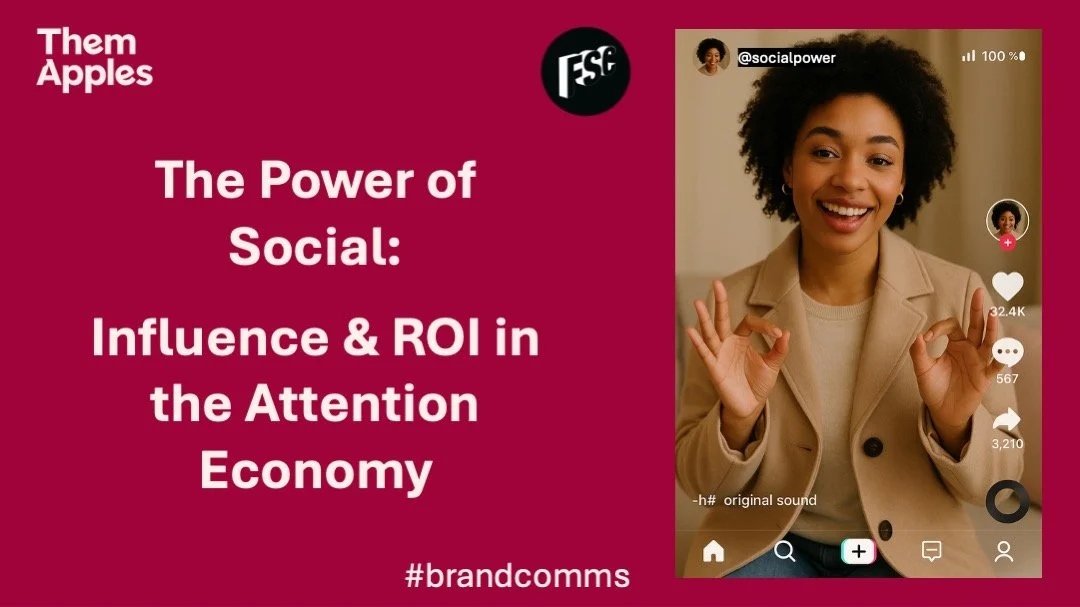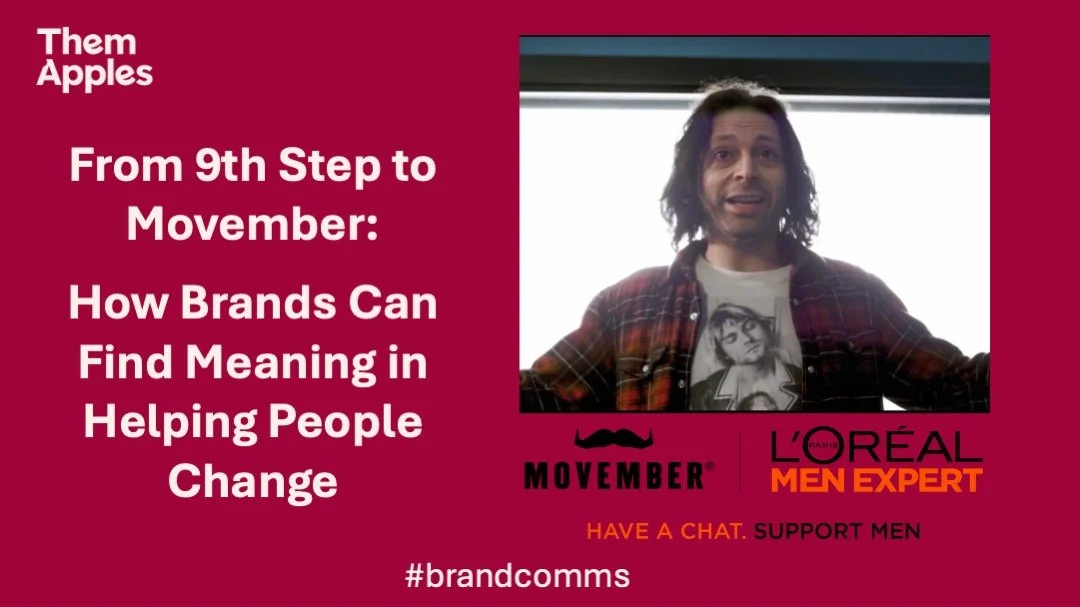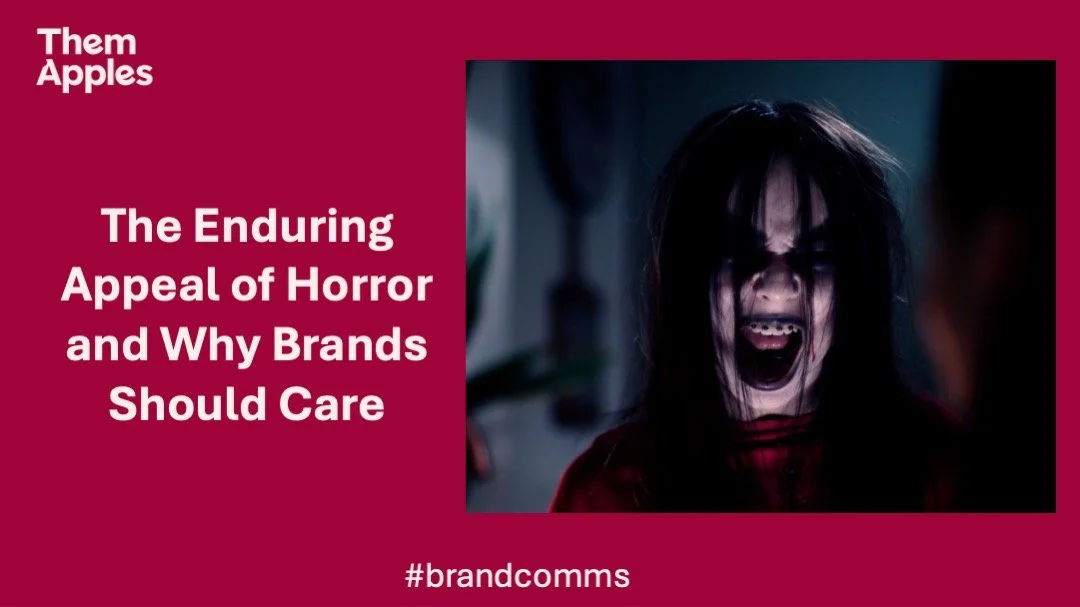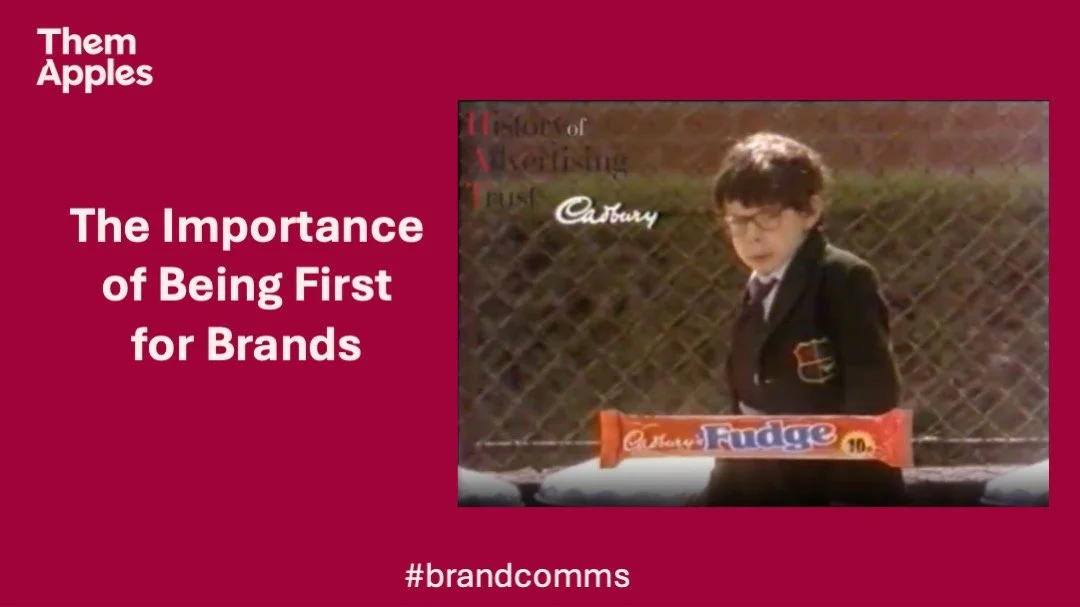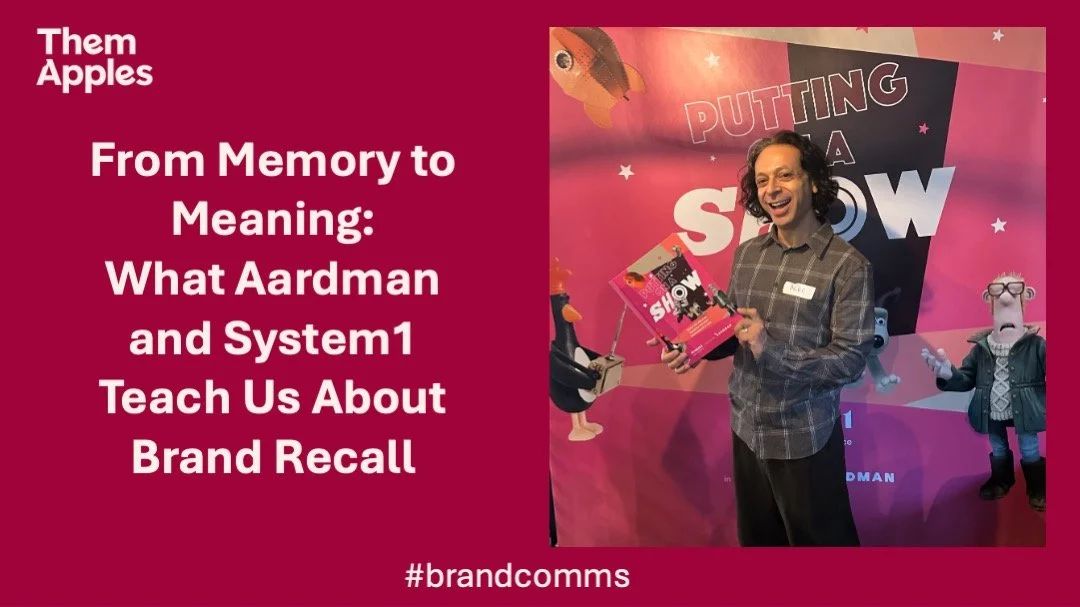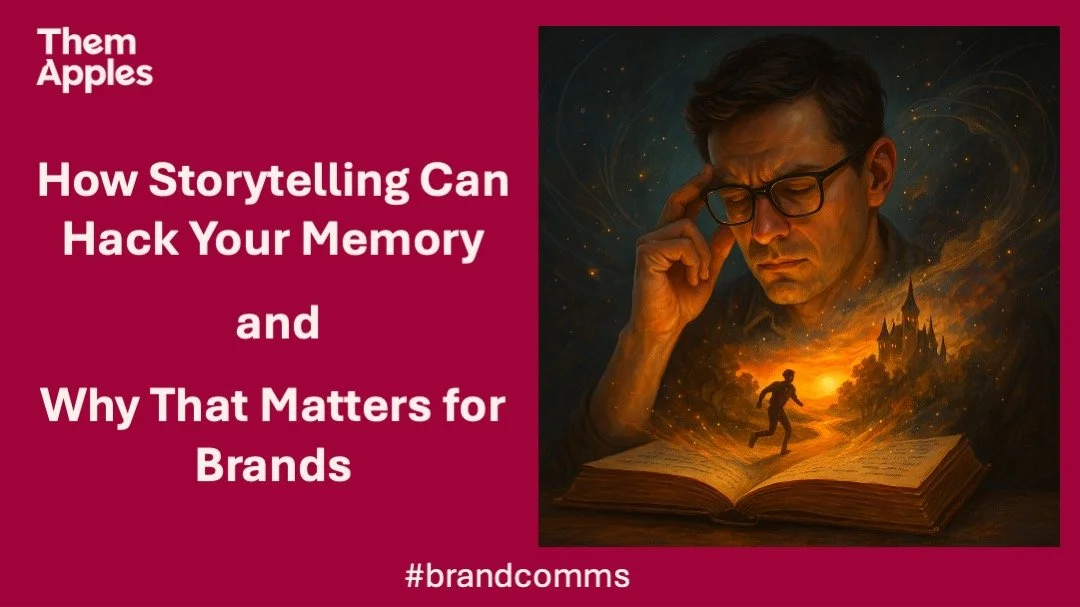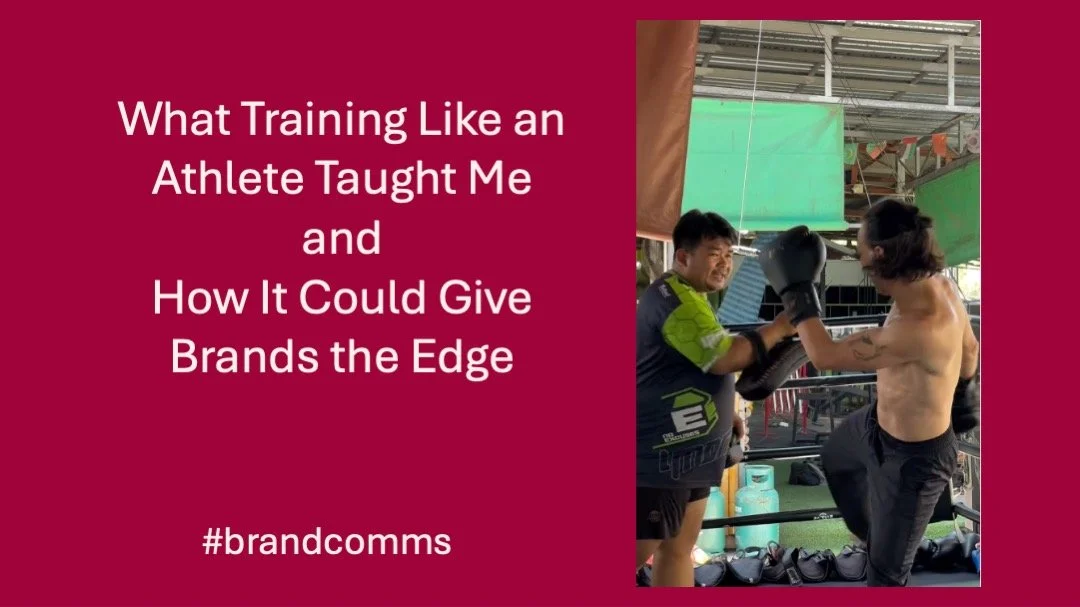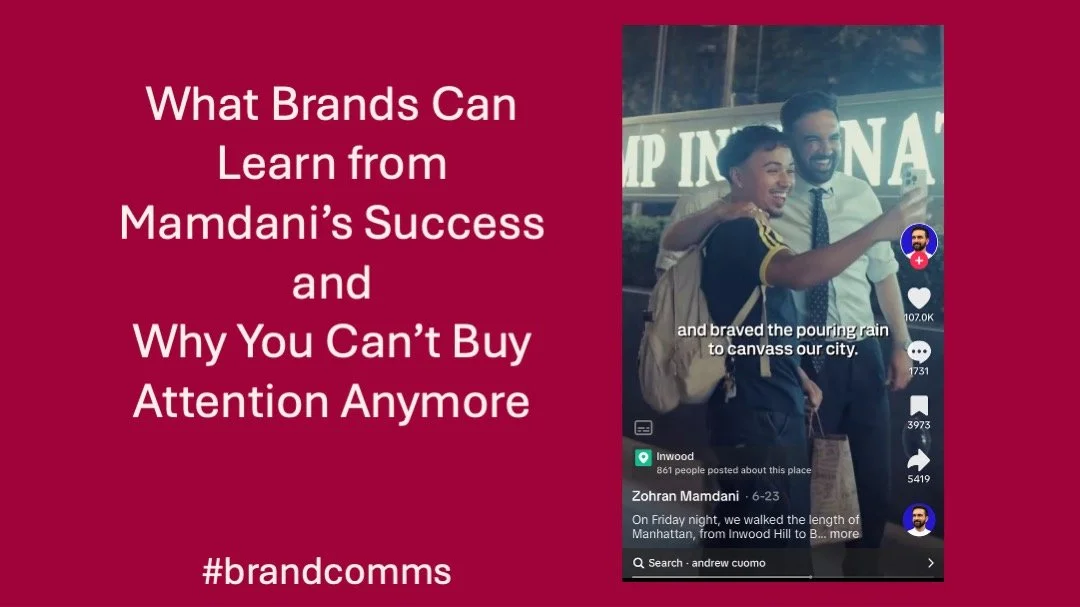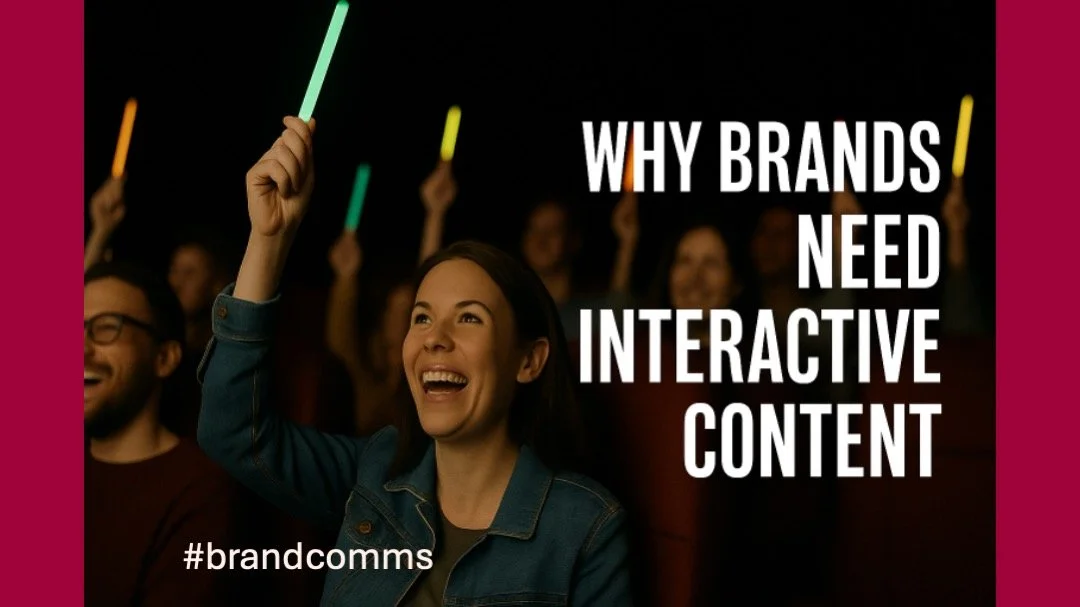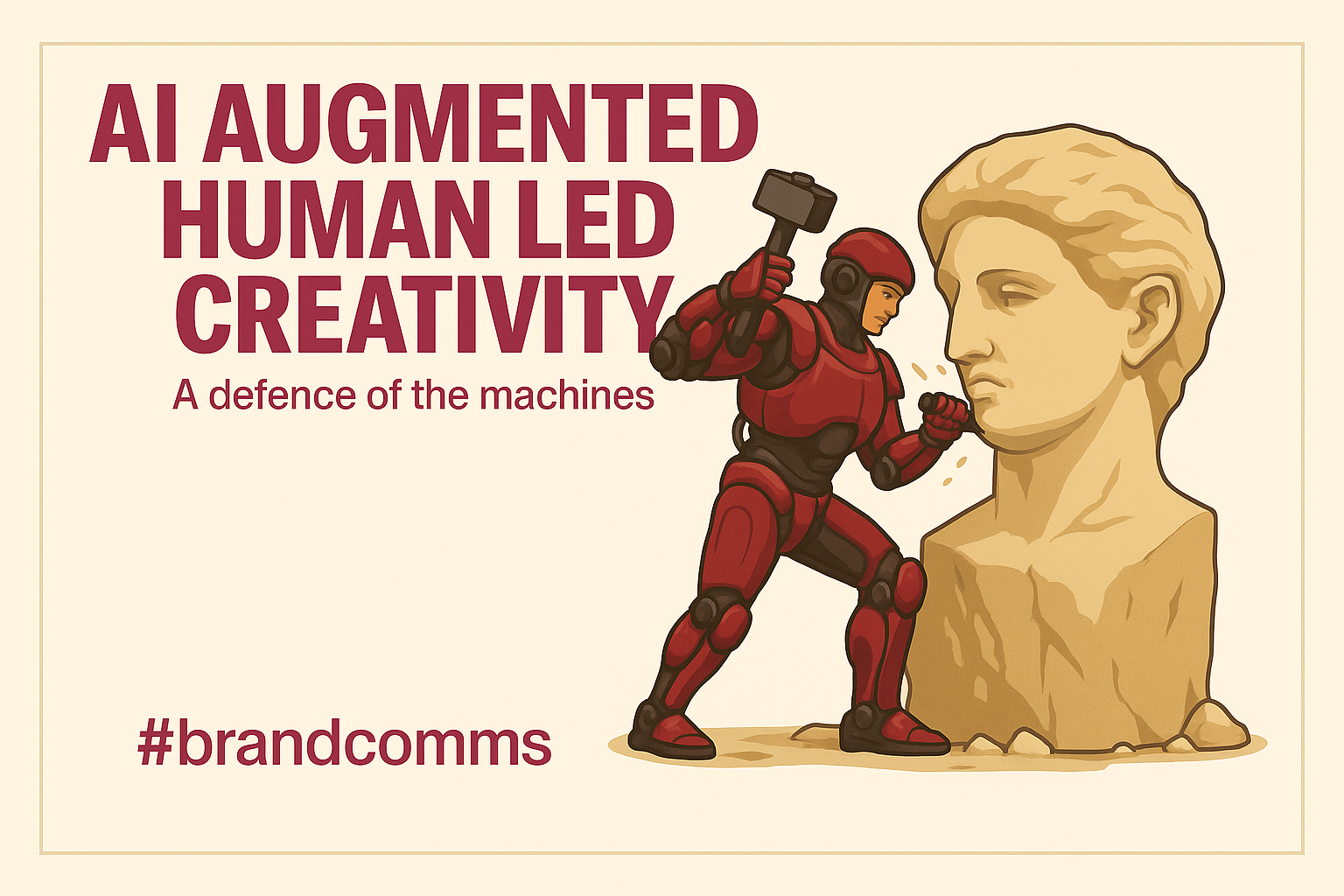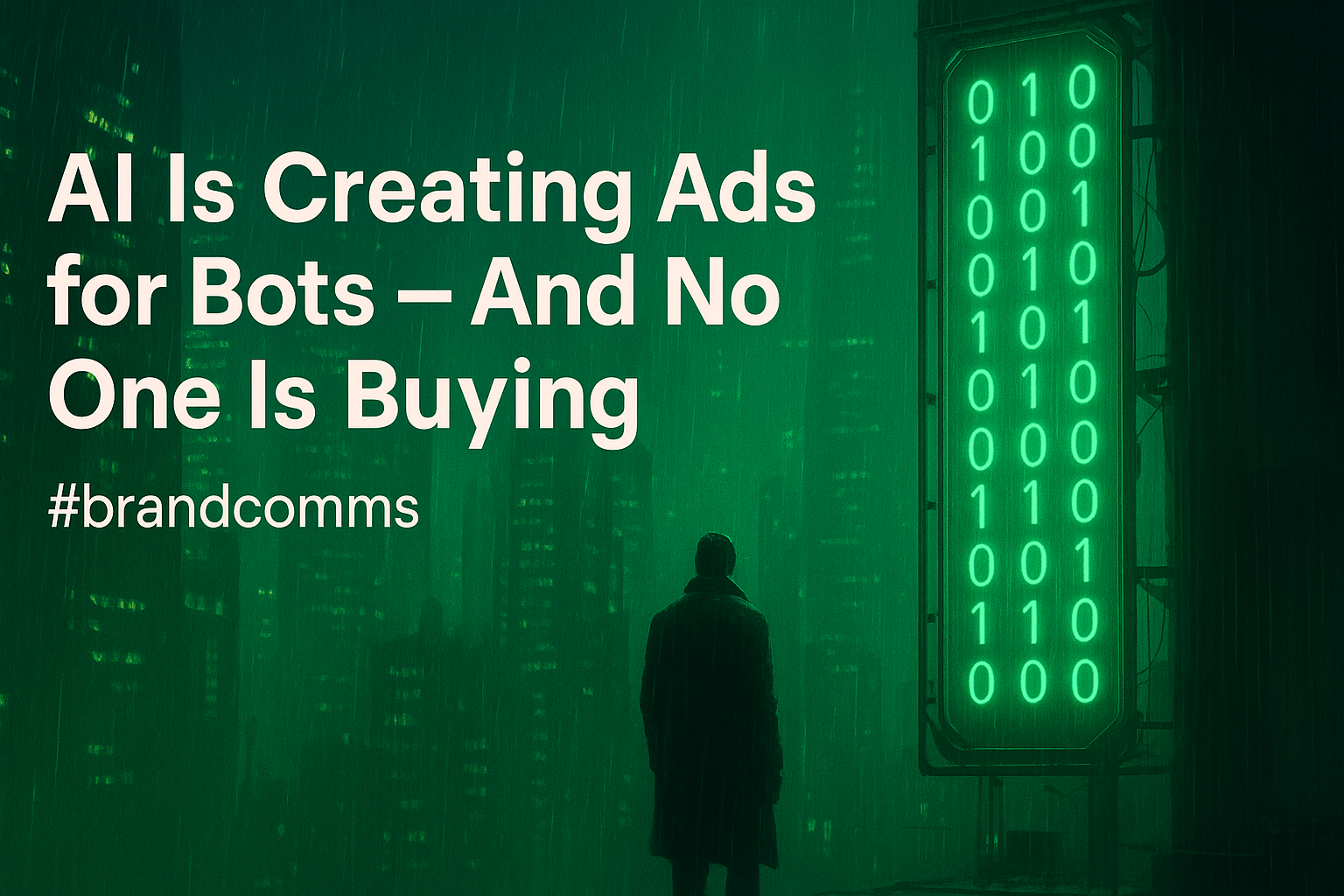#BrandComms
Thought leadership pieces, panel discussions, events, fireside chats and round tables.
Below are our latest thought leadership pieces on LinkedIn.
Stay up to date with the latest in brand marketing. Join the BrandComms mailing list.
Gareth Southgate recently said something worth repeating today: “We have to show young men that character is more important than status.” In a year defined by a crisis in masculinity, that message feels urgent.
The suicide rate for men under 50 remains the highest in the UK. Young men are looking for belonging, yet many are turning to toxic influencers who sell dominance as identity. We can’t keep giving them outdated scripts for what it means to be a man.
Even advertising is beginning to shift. This year’s John Lewis Christmas advert shows masculinity built on listening, sharing culture and emotional connection not stoicism or status. It reflects a truth men recognise but rarely see: vulnerability is not weakness.
If brands help shape culture, they also shape masculinity. That means:
· Stories of growth, not perfection
· Campaigns built on care, not conquest
· Role models who listen, not posture
And if we truly believe in equality, we must demand action offline as well as onscreen. The UK still offers fathers just two weeks of paternity leave the worst in Europe. It damages families, mothers, and children.
Support Dad Shift, and let’s give men permission to care, connect and co-parent.
https://dadshift.org.uk/
#InternationalMensDay #RewriteMasculinity #MensMentalHealth #EqualParenting #BrandsWithPurpose #DadShift
Last week I wrote about why brands must protect their people during Anti-Bullying Week. Today’s article goes deeper into the simple truth driving the second great consumer rebellion:
When employees feel respected, safe and valued, they become your most powerful advocates creating the kind of peer-to-peer trust no interruptive ad can buy.
But when culture turns toxic? The reputational damage is immediate, public and often irreversible.
Ex-employees posting about burnout, internal bullying, gaslighting, toxic work culture and the damage that does to their mental health, whether from iPhone or Android, PC or Mac can have a devastating effect. With anonymous posting you won’t always know who criticises you and there will always be some bad apples but if the tree is healthy, the good apples will outnumber them. If the tree is rotten expect to be named and shamed both publicly and prodigiously.
Not sure what toxic workplace culture looks like? I’m going to go ahead and let Corporate Erin the Manager for Managerial logistics at Management McManagement demonstrate: https://www.tiktok.com/@lisabevolving/video/7303564944828534059
In this week’s piece, I break down why employee-generated content outperforms traditional marketing, how advocacy boosts reach and credibility, and why mistreating staff is now one of the biggest brand risks.
If brands want fans not followers it starts with how they treat their own people.
#BrandComms #Them Apples #EmployeeAdvocacy #PeopleTrustPeople #EmployeeAdvocacy #BrandCulture #MarketingRebellion
Last week’s Power of Social run by Future Strategy Club was a wake-up call for every brand still treating social as “just another channel.”
We’re living in the largest attention marketplace in human history —
💡 500 million years of attention spent on social in 2024 alone
💡 63.9% of the world’s population on social media
💡 $247.3 billion invested globally — yet most brands still underperform
Why?
Because social only looks simple.
True influence now depends on cultural participation, not broadcast logic.
Algorithms have become our media planners, and identity has become the new persuasion.
The future belongs to brands that create belonging not just content.
Those that double down on what AI can’t replicate: emotion, authenticity, and community.
I’ve written up my review of the FSC event and white paper pulling out key insights on identity, AI fatigue, and the rise of storytelling platforms.
A few years ago, I wrote and acted in a short comedy-drama called 9th Step about an addict pretending to be on Step Nine of the Twelve-Step programme. Watching Peter Crouch, Jermain Defoe and Jamie Redknapp open up about men’s mental health on the L’Oréal Men Expert Movember shoot I was exec-producing reminded me how important it is to open up about Men's mental health and the meaningful role brands can take in supporting that. Whether it is addiction, anxiety, depression, burnout. 1 in 4 of us will suffer mental illness at some point in our life. I suspect it is higher than that but there is still a temendous taboo around mental health and talking about how we feel. Brands can create real meaning when they help people face the things we’re all afraid to talk about.
When I was a child I had a recurring nightmare about a dog that bites people’s heads off. It terrified me until one Halloween, I dressed as the dog, and the dreams stopped.
That’s the strange power of horror: by confronting our fears, we take their power away.
From ghost stories around a campfire to TikTok memes, horror has always tapped into something primal; shared emotion, tension, release, transformation. The same mechanics that make a great scare also make brands unforgettable.
If I ask you to name the second person on the moon, can you?
The second in space? The second team to climb Everest?
Didn’t think so.
I learnt early that being second doesn’t stick.
As a child actor, I was in the other Cadbury’s Fudge advert — not the famous “Conkers” one.
And later, the BBC Christmas drama that came after The Box of Delights.
Guess which one people remember.
It’s the same for brands.
Hoover. Coke. Google.
We remember the first, not the follower.
But being first only matters if it means something.
Don’t chase the “world’s first AI ad.”
Be the first to move people.
Be the first to matter.
Last month I attended the launch of Putting On a Show, the brilliant new study from System1 and Aardman, and it reminded me why so much modern advertising has lost its magic.
We have become obsessed with logic, data and performance metrics, when in reality it is emotion that drives memory and recall.
The research proves it. Aardman's most successful campaigns, especially those using their own iconic characters, consistently score above 5 stars for creative effectiveness.
When we let Aardman be Aardman, it works.
When agencies try to rationalise or over-engineer that creativity, it does not.
Because, in the tug of war between logic and emotion, emotion always wins.
You do not calculate your odds when you see a tiger, you just run.
That is how audiences respond to storytelling too.
Read my full piece on what System1 and Aardman can teach us about memory, emotion and the lost art of showmanship.
I recently discovered that I share something with my father and brother — a working memory deficit. For years I thought it was simply forgetfulness. In truth, it’s a cognitive bottleneck that makes everyday functioning and creativity a constant act of juggling.
But here’s the surprising part: in learning to hack my own memory, I stumbled upon something brands have forgotten.
Storytelling.
For millennia, humans have used stories to move information from short-term to
long-term memory. The more emotional, visual, and visceral the story, the deeper it embeds. Modern neuroscience calls this System 1 processing.
System1 Group’s research shows that emotionally charged ads deliver 6x more brand lift and around 20% higher recall than purely rational ones. Yet today, in a world of cognitive overload, endless feeds, notifications, and multitasking, we’ve flooded the system. Attention spans are shrinking, and working memory is collapsing under the weight.
Brands that keep shouting into the noise are forgotten.
Brands that tell stories are remembered.
If we want to be recalled, we need to stop adding to the chaos and start creating meaning.
Because in the end, storytelling isn’t just entertainment, it’s the only way past the modern working-memory bottleneck and into long-term brand recall.
This year in Thailand, I split my time between recharging on the beach and diving headfirst into my projects; running a retreat, building start-ups and developing content.
While working I set myself a challenge: 30 hours of martial arts training in 2 weeks. No shortcuts. No excuses. My daughter (already a black belt in Taekwondo) pushed me harder than anyone else.
What I learned was that physical excercise didn't just transform my physicality, it reshaped how I think, work, and live.
Discipline creates freedom. Structure and routine unlock creativity and clarity.
Adversity teaches agility. Broken ribs taught me more about adaptation than the many books I've read on management and creativity.
Recovery is part of the process. Ice baths, saunas, meditation: without care, you burn out; with it, you thrive.
Mental toughness fuels decisions. Pushing through discomfort builds resilience and sharper thinking.
By the end, I didn’t feel drained. I felt more alive, more productive and more decisive. Every hour of training seemed to add two hours of clarity.
For brands, this is more than a metaphor. It’s a model.
Embed wellbeing it into culture for your people, for your customers, for your community. Build challenges, empower people, prioritise recovery, lead by example. Done right, it boosts creativity, resilience, and loyalty.
Commitment starts the journey. Consistency finishes it.
And for anyone who wants some inspiration this is my morning motivation playlist: https://lnkd.in/eZDG3Tyh
This summer I swapped London deadlines for a Thai island and ran a yoga retreat.
It felt exactly like producing a film or a brand activation:
A budget, schedule and scope
A mission to create something fully immersive
A community we had nurtured for years
But what set it apart was the human connection. We weren’t just running classes, for the time we were there together and we became a family. We meditated together, laughed together, shared our experiences, adapted, immersed ourselves in nature and the impact was transformative.
Here are the lesson for brands:
products don’t build loyalty, experiences do.
85% of consumers are more likely to purchase after a live brand experience.
70% say they’re more likely to become repeat customers.
Communities built on trust and authenticity are the most valuable equity you can create.
A machine can’t replicate the feeling of standing barefoot in the jungle at sunrise, hearing cicadas and monkeys while flowing together in harmony. And no brand should try to automate that magic.
Brands should design experiences that bring people together, create belonging, and treat communities not as customers, but as family.
Nothing replaces experience. Nothing replaces connection.
Gen Alpha aren’t “kids on iPads” anymore. They are a $500 billion force already shaping what families eat, wear, drive, and stream. By 2029, their economic weight will hit $5.46 trillion before most of them even finish school.
This is the first generation of AI natives:
They can’t be greenwashed, tricked, or bored into submission.
They expect tech that feels like magic.
They’re post-attention economy, not addicted to the scroll, but craving entertainment, interactivity, and real-world fun.
And their values are non-negotiable: inclusivity, sustainability, authenticity.
Lose them once, lose them forever.
But within that danger lies opportunity: brands that engage authentically, entertain relentlessly, and build communities they can truly belong to, will win the loyalty of the most influential cohort in history.
We’ve written a new white paper “Generation Alpha: The Gateway Generation” exploring how brands can prepare for this tidal wave of change.
Download here: https://lnkd.in/eGVdfwrd
Brilliantly authored by Andrew Tindall and Josh Fruttiger of System1 and Esteban Ribero of TikTok the white paper sets out the results of in-depth research they entered into testing nearly 900 ads across eight countries.
The results vindicated my entire approach to advertising. In today's article I break down what that means for brands.
“AI will most likely lead to the end of the world, but in the meantime, there’ll be great companies.” – Sam Altman
I sat down with author Andy Dornan to talk about his new thriller Gestalt in the Machine. We covered:
Why the people building AI are also the ones most afraid of it
What happens when brands chase clicks instead of meaning
The arms race between governments and corporations
And why some experts say humanity has a 70% chance of extinction by 2030
It’s part murder mystery, part cautionary tale – and it might not be fiction for long.
Yesterday, I attended an event hosted by Meta and Venture Beyond on AI-generated advertising. With a host of brilliant minds it was an event that mined the depths of AI futures. A big thanks the panelists for the insight:
Ian Edwards Shahbaz Khokhar Ghita El Haitmy Christian Green Priyanka Parmar 🌟Rourke Sefton-Minns Daniel Verten Romain Torres
However one single statistic filled me with fear.
Read my article to find out why.
In 2025, Brits are spending more time looking at their phones than at their TVs.
The 30-second TVC feels like a relic, skipped, scrolled past, or avoided altogether. Or is it?
The explosive growth of ad-funded streaming platforms like Tubi, Pluto, and Freevee suggests a twist in the story. Audiences are tiring of subscription fatigue and choice paralysis, and FAST channels are bringing back a lean-back, curated experience.
This isn’t the old primetime. It’s algorithmic, non-linear, and always-on. And if the 30-second spot is coming back, it has to evolve:
Grab attention in the first 3 seconds
Compete with TikTok, YouTube and influencers
Marry the craft of storytelling with digital performance metrics
The 30-second TVC is back. But it lives in a multiverse now.
In New York, political outsider Zohran Mamdani defeated a super PAC–backed opponent with nothing but vertical video, on-the-street conversations and social-native storytelling. Mamdani earned attention rather than buying it.
From TikTok vox pops to parasocial intimacy, Mamdani's campaign offers a masterclass in modern brand building on social platforms - one that brands should be paying close attention to.
Vox pops are the new billboards
Memetic messages beat media spend
Parasocial relationships build trust
Platform-native talent cuts through
What does “Freeze the Rent” have in common with “Just Do It?” They’re both simple, sticky and mimetic and they work.
In the age of the attention recession, audiences don’t want more content, they want meaning.
Global mythologies have always held power; from Hanuman to Hine-nui-te-pō. They tap into something ancient and human: our desire for transformation, triumph, identity and emotional truth.
As I navigate the many stories on offer at the 33rd Raindance Film Festival I am struck by how universal these stories are, how often they speak to something deeply ingrained in all of us, something that defines us, that defines our sense of humanity.
Today’s vertical video platforms like ReelShort and DramaBox are combining dopamine-hook storytelling with timeless narrative structure. Cliffhangers, redemptions, quests. They're tapping into the mythic blueprint. Brands once knew this: Apple’s ‘1984’, Patagonia’s 'Save the Bears'. Myth made marketing memorable.
Here is the opportunity for brands. What if brands helped birth the next Star Wars, Narnia or Middle-Earth? What if they empowered creators to tell mythic, serialised stories across platforms people actually use? Brands are not just selling products anymore, they're creating purpose and meaning through memory and myth.
What story is your brand telling?
Last week I went to an interactive film screening of Run by Paul Raschid at the Raindance Film Festival. The audience chose the direction of the story using glow sticks decisions that literally shaped the character’s fate. It was a fun and unforgettable shared experience.
Why don’t more brands create experiences like this?
At a time where feeds are flooded with AI-generated noise, interactive content is how we earn engagement.
Whether it’s a cinema experience, a vertical drama series, or a social-first campaign interactivity taps into something deeper than views. It turns your audience into co-creators.
Interactive content drives 2x more conversions than passive content and viewing to the end more than 90% of the time, compared to just 58% for standard video.
If you want content that connects across Gen Z, Alpha, Millennials and Gen X make it interactive.
A defence of the machines
In this article I come to the defence of AI. I've been critical, I've talked about the dangers of AI, now here is an article that explores how AI Augmented Human Led creativity can supercharge our communications
At a recent panel, someone described the future of marketing as “AI-generated content optimised for AI-generated audiences.”
And honestly? We’re already halfway there.
We’re celebrating engagement…
That comes from bots.
On content made by bots.
Reported by bots.
But where are the people?
Where are the stories?
Where are the sales?
In my latest article, I explore:
Electric Dreams, Black Mirror, 1984 and the Attention Singularity
Why Big Data became Big Noise
What Cadbury’s Gorilla and the Hollywood Star System can still teach us about soul and human need
While brands have been focussing on short sharp messaging for the influencer age, 6 second bite-sized snackable content, the pirates figured out what the marketers forgot. That story sells. That emotion is memorable. That the underdog still wins hearts. And the vertical apps have capitalised on that and are making billions.
What Brands Can Learn from this?.
I went to the cinema over the weekend to see The Karate Kid: Legends. The show was sold out, mainly families, teens and twenty somethings. There was a palpable buzz in the theatre. Throughout the movie there were murmurs, sighs, whoops, cheers and applause. The film engaged the audience and they were fully invested in the life of the characters. This was a shared experience between fans, young and not so young.
So what can brands take away from these unlikely martial arts hits? I think there are powerful lessons here especially for anyone trying to connect with Gen Z without losing Millennial or Gen X audiences.
There’s a growing belief that AI is a magic button you can press and out comes brilliant creative content – no need for actors, writers, designers it will magically find your brand's voice and engage with your brand community. The AI tech stack contains some incredibly powerful tools some of which I use every day. Can AI write great comedy for brands? No. And it never will. Here’s why:
AI can’t find comedy for a brand’s voice. It can only mimic someone else’s.

